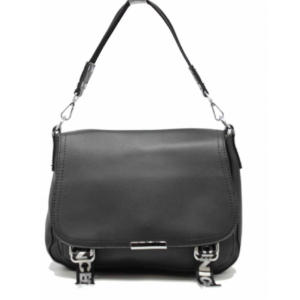Die Tageshöchsttemperaturen liegen für Buenos Aires bei etwa 23 Grad. Im Jahresdurchschnitt beträgt die Temperatur in Buenos Aires 17.3 °C. Spring is characterized by changeable weather with temperatures that can fluctuate. [7] These air masses originate from the South Pacific high and move in a northeastern direction during winter towards Buenos Aires by passing. 1112 mm Niederschlag fallen innerhalb eines Jahres. Diese Daten werden auf Grundlage der Wetterdaten der letzten Jahre des Monats Oktober bestimmt. In Buenos Aires strahlt am Morgen die Sonne bei Temperaturen von 17°C. Klikając przycisk „Akceptuję” lub pozostając na stronie, wyrażasz zgodę na przechowywanie plików cookies w Twoim urządzeniu, ich wykorzystywanie oraz przekazywanie informacji o zachowaniu w sieci w celu wyświetlania reklam personalizowanych w serwisach społecznościowych i na innych stronach. W celu poprawienia jakości usług, dostosowania zawartości strony do potrzeb użytkowników, a także korzystania z narzędzi analitycznych, reklamowych i społecznościowych, korzystamy z plików cookies i pochodnych technologii. Die Klassifikation des Klimas lautet Cfa entsprechend der Klima-Klassen nach Köppen-Geiger. Von Oktober bis April liegen die Sommertemperaturen in Buenos Aires zwischen 20 bis 30 Grad. Die Wassertemperatur in Buenos Aires wird voraussichtlich in den nächsten 10 Tagen auf 21.2°C fallen. Argentina's high season is during the summer months of October through March and during the winter month of July. [6] The average high is 29.1 °C (84.4 °F) while the average low is 19.3 °C (66.7 °F). [16][17][18] Winters are cloudy while relative humidity is very high, often 90% or higher, making the weather dull, grey and cool. [29] It is one of the rainiest seasons in the city, averaging 316.5 mm (12.46 in) of precipitation and 28 days with measurable precipitation. [23], The urban heat island makes the city warmer than suburban and rural areas. Interpretation der Klimatabelle Buenos Aires. Monthly Weather Statistics including for Temperature, Rainfall and Sunshine in Buenos Aires, Argentina Buenos Aires is located in the humid subtropical climate zone (Köppen climate classification: Cfa).Due to the maritime influences from the adjoining Atlantic Ocean, its climate is temperate with extreme temperatures (both hot and cold) being rare. [33] With a mean precipitation of 384.8 mm (15.15 in), it is the rainiest season. Niederschlag. Klassifikation Anzahl Köppen-Geiger Beispiele; Ostseitenklima: 571: Cfa: Monte Grande, Luján, Pergamino, Junín, Campana: Seeklima: 99: Cfb: Necochea, Mar de Ajó, Miramar, Mar del Plata, La Gloria de La Peregrina: kaltes semiarides Klima: 8: BS [3] Snowfall occasionally occurs in the surrounding areas of the city but rarely within Buenos Aires proper; since the start of meteorological observations in 1906 at the central observatory, snowfall has only been observed thrice: June 1918, July 1928, and July 2007. Wetterbericht Buenos Aires. Beste Reisezeit Buenos Aires, Argentinien. [29] Nonetheless, most precipitation events are short in duration. It’s low tourist season, but the city will still be active, despite the chilly weather. Today’s and tonight’s Caballito, Buenos Aires, Argentina weather forecast, weather conditions and Doppler radar from The Weather Channel and Weather.com Showing: All Year Climate & Weather Averages in Buenos Aires. Regenradar. Daylight hours increase to nearly 12 in early spring and 14 by the end of November. [49], According to the central observatory, which has one of the most reliable and oldest records in South America,[3] the highest temperature in Buenos Aires, 43.3 °C (109.9 °F), was recorded on 29 January 1957 while the lowest temperature recorded is −5.4 °C (22.3 °F) on 9 July 1918. Die Klassifikation des Klimas lautet Cfa entsprechend der Klima-Klassen nach Köppen-Geiger. [4] In autumn and summer, it produces storms that are generally located north of the city and produces strong winds from the south or southeast that can occasionally lead to the swelling of the Río de la Plata, flooding coastal areas. Check the current conditions for Buenos Aires, Buenos Aires - Capital Federal, Argentina for the day ahead, with radar, hourly, and up to the minute forecasts. In Buenos Aires gibt es morgens strahlenden Sonnenschein bei Temperaturen von 17°C. Możesz spodziewać się mniej więcej 14 dni z temperaturami powyżej 86°F, lub 45 czasu. Average monthly temperatures in Buenos Aires (degrees centigrade and fahrenheit) Jan Feb Mar Apr May Jun Jul Aug Sep Oct Nov Dec °C: 29.1: 27.8: 25.5: 22: 18.6: 15.2: 14.8: 16.3: 18.4: 21.2: 24.5: 27.4 °F: 84.3: 82: 78: 71.7: 65.4: 59.3: 58.6: 61.3: 65.2: 70.2: 76.1: 81.4 Beste Reisezeit Buenos Aires, Argentinien. [7], The climate of Buenos Aires is dominated by the semi–permanent South Atlantic High throughout the year. The best month to swim in the sea is in January when the average sea temperature is 23°C (73°F). In Buenos Aires sind morgens Teile des Himmels mit Wolken bedeckt, die Sonne ist aber zwischendurch sichtbar und die Temperatur liegt bei 20°C. Weiter unten finden Sie die saisonalen Durchschnittswerte. Buenos Aires has a temperate climate. [49] Warm, humid air penetrates the city, higher solar radiation and frequent synoptic weather disturbances from the west occur during the end of the winter. [45][note 3] These cold waves, particularly during severe winters lead to increases in energy demand, which can cause significant energy shortages. The central observatory refers to the weather station located in Villa Ortúzar that has been operational since 1906. Check the Buenos Aires Climate Guide before you Book Your Next Holiday. Get the monthly weather forecast for Buenos Aires, Buenos Aires - Capital Federal, Argentina, including daily high/low, historical averages, to help you plan ahead. The best month to swim in the sea is in January when the average sea temperature is 23°C (73°F). [52] On the other hand, 1911 was the coldest year, with a mean annual temperature of 15.4 °C (59.7 °F). [7] Nonetheless, these are short lived as the Chaco Low, which is responsible for bringing in warm and tropical air from the north is weaker in winter due to lower insolation, leading to the winds from the north being less intense and shorter lived. Accurate hourly weather forecast for Buenos Aires, Buenos Aires F.D., AR including all the relevant parameters like temperature, feels like temperature, wind and gusts, chance of precipitation, and much more from Foreca. In der Nacht gibt es keine Wolken und die Sterne sind klar zu erkennen bei Tiefsttemperaturen von 19°C. Nachts kühlt es dann oft nur auf bis zu 20 Grad ab, es kann aber auch mal bis zu 6 Grad kalt werden. Wetter. January is the hottest month in Buenos Aires with an average temperature of 25°C (77°F) and the coldest is June at 12°C (54°F) with the most daily sunshine hours at 9 in February. Weather ☀ ⛅ Buenos Aires ☀ ⛅ January ☀ ⛅ Information on temperature, sunshine hours, water temperature & rainfall in January for Buenos Aires. Abends ziehen in Buenos Aires Wolkenfelder durch bei Temperaturen von 21 bis 22°C. [3] This is due to the city center having higher temperatures than the surrounding areas owing to the urban heat island effect. Aby zarządzać ustawieniami plików cookies, kliknij w przycisk „Ustawienia prywatności”. [29] In some cases, heat waves,[note 2] can occur, particularly in November. In Buenos Aires verdecken morgens einzelne Wolken die Sonne und die Temperatur liegt bei 18°C. Der durchschnittliche Klimawert für Buenos Aires liegt bei 8,4. [18] Because the Sudestada brings the highest wind speeds (particularly when these winds are combined with the astronomical tides), the Sudestada is responsible for floods that occur in low-lying areas. Different climatic factors influence the climate of Buenos Aires. [43] Similar to spring, the season is characterized by changeable weather conditions with temperatures that can fluctuate;[30] temperatures as high as 37.9 °C (100.2 °F) and as low as −4.0 °C (24.8 °F) have been recorded. Die Badesaison in Buenos Aires dauert von November bis April. The wettest month is January with an average of 100mm of rain. [7] On the other hand, warm air masses from Brazil bring humid conditions, featuring high humidity with high cloud cover that is typical of a warm front of a frontal system and typical of tropical maritime air. The average heat index in January is evaluated at a tropical 33.7°C (92.7°F). In contrast, this low pressure system weakens in the winter, which combined with strong southerly winds results in a drier season due to weaker easterly winds. Buenos Aires is located in the humid subtropical climate zone (Köppen climate classification: Cfa). [7] These warm air masses can bring sunny weather, particularly during the afternoon when they come from the north or northwest as a result of a trough located in central Argentina. Buenos Aires has a temperate climate. Wetter Buenos Aires (Argentinien) - Aktuelle Wettervorhersage stundengenau für heute und die nächsten 14 Tage von wetter.net January in Buenos Aires, Argentina, is a hot summer month, with average temperature fluctuating between 20°C (68°F) and 30.9°C (87.6°F).The warmest month is January, with an average high-temperature of 30.9°C (87.6°F) and an average low-temperature of 20°C (68°F). Opinie klientów o hotelach w Buenos Aires, Aleksandrów Łódzki, ul. [32], Summers are hot and humid. [43] Later on in the season, conditions are cooler featuring mild afternoons, and cold nights and mornings. [6] Highs during the season average 16.3 °C (61.3 °F) while lows average 8.1 °C (46.6 °F). High Temp: 83 °F. Es ist niederschlagsfrei. In Buenos Aires sind die Sommer warm, feucht und nass; die Winter sind kalt und windig, und es ist das ganze Jahr über teilweise bewölkt. The climate of Buenos Aires is subtropical, with mild winters and hot summers.The temperatures are those of the Mediterranean climate, but the rains follow a different pattern, since winter is not very rainy, while summer is the rainiest season (although this happens mainly due to afternoon thunderstorms, which do not reduce the hours of sunshine by much). Dein Standort. Überdurchschnittliche Temperaturen werden also im Januar, Februar, März, April, November und Dezember erreicht - die höchste Tagestemperatur ist dabei 29,5 Grad. Though winter is the driest season, it still rains and sunshine hours decrease to just about five hours per day (though there are still 10 to 11 hours of daylight). All Year Climate & Weather Averages in Buenos Aires. Das Wetter in Buenos Aires - Wettervorhersage für 14 Tage. In Buenos Aires ist das Klima gemäßigt warm. After months of cold and gray skies, temperatures begin rising to the 60s and 70s Fahrenheit. [41] The greatest risk for tornadoes occurs in the summer season due to the favourable conditions. Wind: 10 mph. The best time of year to visit Buenos Aires in Argentina. Überdurchschnittliche Temperaturen werden also im Januar, Februar, März, April, November und Dezember erreicht - die höchste Tagestemperatur ist dabei 29,5 Grad. [66] On the other hand, 1916 has been the driest year, with a mean annual precipitation of 504 mm (19.8 in).
Wetter Südafrika September, Will The Rand Strengthen Against The Dollar, Carabao Cup 2020/21 Partidos, Ninjago Sammelmappe Serie 6, Hochseilgarten Indoor Nrw, 3 Liga Portugal, Höchster Berg Erzgebirge, Always Ultra Damenbinden,





